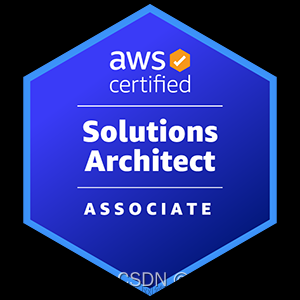A company provides a Voice over Internet Protocol (VoIP) service that uses UDP connections. The service consists of Amazon EC2 instances that run in an Auto Scaling group. The company has deployments across multiple AWS Regions.
The company needs to route users to the Region with the lowest latency. The company also needs automated failover between Regions.
Which solution will meet these requirements?
A. Deploy a Network Load Balancer (NLB) and an associated target group. Associate the target group with the Auto Scaling group. Use the NLB as an AWS Global Accelerator endpoint in each Region.
B. Deploy an Application Load Balancer (ALB) and an associated target group. Associate the target group with the Auto Scaling group. Use the ALB as an AWS Global Accelerator endpoint in each Region.
C. Deploy a Network Load Balancer (NLB) and an associated target group. Associate the target group with the Auto Scaling group. Create an Amazon Route 53 latency record that points to aliases for each NLB. Create an Amazon CloudFront distribution that uses the latency record as an origin.
D. Deploy an Application Load Balancer (ALB) and an associated target group. Associate the target group with the Auto Scaling group. Create an Amazon Route 53 weighted record that points to aliases for each ALB. Deploy an Amazon CloudFront distribution that uses the weighted record as an origin.
The correct answer is A. Deploy a Network Load Balancer (NLB) and an associated target group. Associate the target group with the Auto Scaling group. Use the NLB as an AWS Global Accelerator endpoint in each Region.
Here’s why:
- VoIP services typically use UDP connections, which are not supported by Application Load Balancers (ALBs), making options B and D unsuitable.
- AWS Global Accelerator improves the availability and performance of your applications for local and global users. It uses the AWS global network to optimize the path from your users to your applications, improving the performance of your TCP and UDP traffic.
- AWS Global Accelerator also continuously monitors the health of your application endpoints, and routes traffic to the closest healthy endpoints to improve application availability.
Option C is incorrect because it involves using Amazon Route 53 latency records and Amazon CloudFront, which are not the best tools for this specific use case.
Here’s why:
-
Amazon Route 53 latency records route traffic based on the lowest network latency for your end user (i.e., which region will give them the fastest response time). However, it doesn’t provide automated failover between regions, which is a requirement in this scenario.
-
Amazon CloudFront is a content delivery network (CDN) offered by Amazon Web Services. Content delivery networks provide a globally-distributed network of proxy servers which cache content, such as web videos or other bulky media, more locally to consumers, thus improving access speed for downloading the content. It’s not designed to route users to the region with the lowest latency for VoIP services.
-
AWS Global Accelerator, on the other hand, directs traffic to optimal endpoints over the AWS global network, improving the performance of your traffic by as much as 60%. When the health of your resources changes, Global Accelerator reacts within seconds to keep your traffic on the optimal path. It also provides instant regional failover capability, which aligns with the requirements.文章来源:https://www.toymoban.com/news/detail-712566.html
Therefore, using a Network Load Balancer (NLB) with AWS Global Accelerator would be a more suitable solution for this scenario. NLB operates at the connection level (Layer 4), routing connections to targets – Amazon EC2 instances, microservices, and containers – within Amazon VPC based on IP protocol data. Ideal for load balancing of both TCP and UDP traffic, NLB is capable of handling millions of requests per second while maintaining ultra-low latencies, which is perfect for VoIP services.文章来源地址https://www.toymoban.com/news/detail-712566.html
到了这里,关于AWS SAA C003 #29的文章就介绍完了。如果您还想了解更多内容,请在右上角搜索TOY模板网以前的文章或继续浏览下面的相关文章,希望大家以后多多支持TOY模板网!








